Alien: Resurrection
5.4 /10 1 Votes
54% Rotten Tomatoes 63% Metacritic Genre Action, Sci-Fi, Thriller Duration Language English | 6.3/10 IMDb 1.5/4 Roger Ebert Film series Alien Country United States | |||||||||||||||||||||||||||||||||
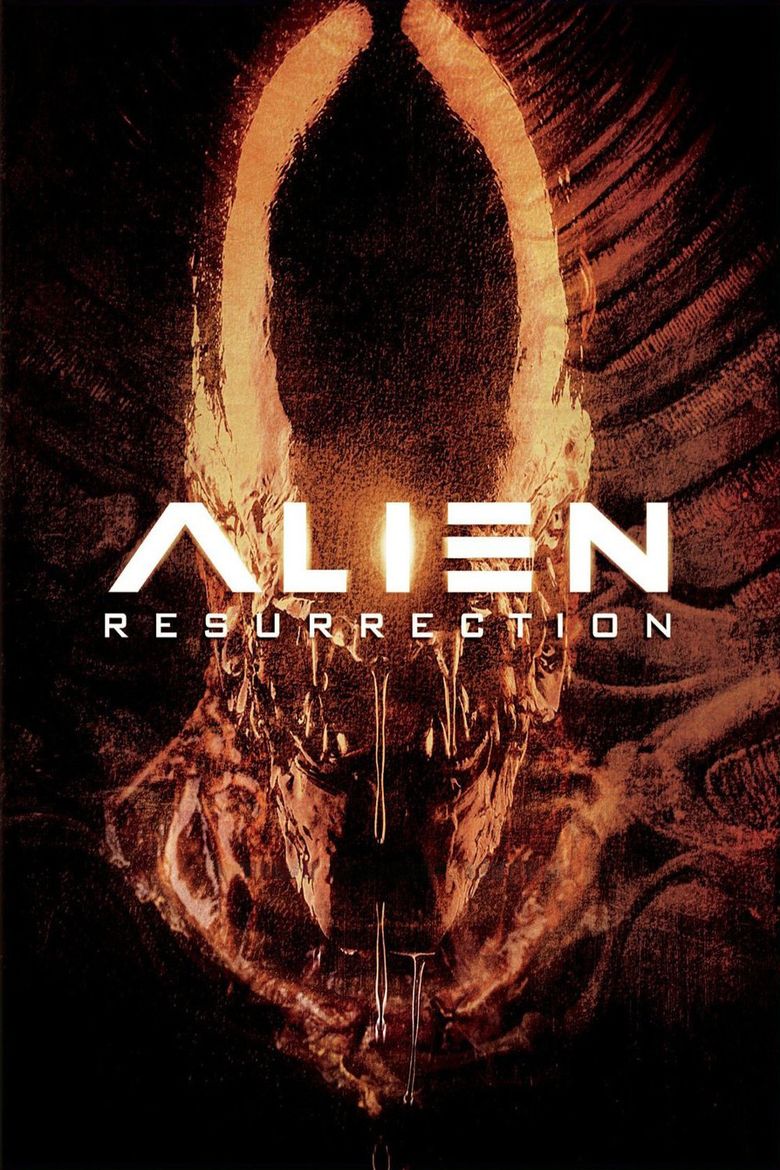 | ||||||||||||||||||||||||||||||||||
Release date November 26, 1997 (1997-11-26) Based on Characters created by Dan OBannonRonald Shusett Cast (Ripley), (Annalee Call), (Vriess), (Johner), (Frank Elgyn), (Dr. Jonathan Gediman) Similar movies Independence Day , Guardians of the Galaxy , Interstellar , Alien from the Darkness , Edge of Tomorrow , Men in Black Tagline It's already too late. | ||||||||||||||||||||||||||||||||||
Alien resurrection 3 5 movie clip up the ladder 1997 hd
Alien Resurrection is a 1997 American science-fiction action horror film directed by Jean-Pierre Jeunet and written by Joss Whedon. It is the fourth installment in the Alien film series, and the final installment in the original series. It was filmed at the 20th Century Fox studios in Los Angeles, California. It stars Sigourney Weaver reprising her role as Ellen Ripley with additional roles played by Winona Ryder, Ron Perlman, Dan Hedaya, J. E. Freeman, Brad Dourif, and Michael Wincott. Tom Woodruff, Jr. plays the Alien Queen, and the Newborn.
Contents
- Alien resurrection 3 5 movie clip up the ladder 1997 hd
- Alien resurrection nostalgia critic
- Plot
- Origins
- Direction and design
- Creatures
- Filming
- Visual effects and miniatures
- Music
- Box office
- Critical reception
- Home media
- 2003 Special Edition
- Merchandising
- Cancelled sequel
- References
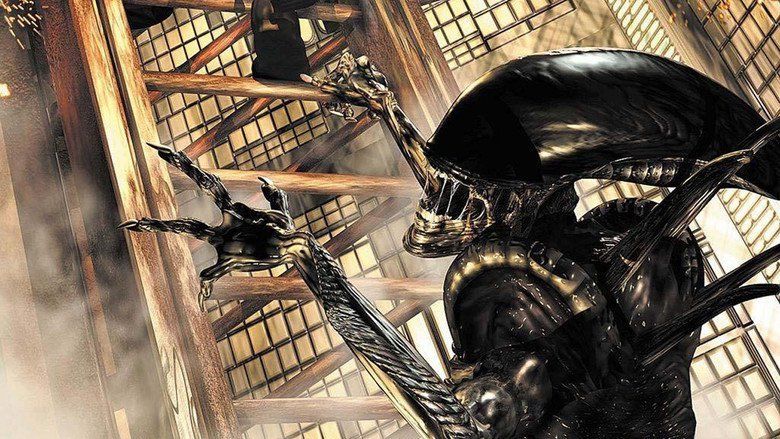
In the film, which is set 200 years after the preceding installment Alien 3 (1992), Ripley is cloned and an Alien queen is surgically removed from her body. The United Systems Military hopes to breed Aliens to study and research on the spaceship USM Auriga, using human hosts kidnapped and delivered to them by a group of mercenaries. The Aliens escape their enclosures, while Ripley and the mercenaries attempt to escape and destroy the Auriga before it reaches its destination: Earth.

Alien Resurrection was released on November 26, 1997, and received mixed reviews from film critics. Roger Ebert of the Chicago Sun-Times felt "there is not a single shot in the movie to fill one with wonder", later naming it one of the worst films of 1997, while Desson Thomson of The Washington Post said the film "satisfactorily recycles the great surprises that made the first movie so powerful". The film grossed $47.7 million in North America, the least successful of the Alien series on that continent. It was well received internationally, however, with a gross of $113.5 million, bringing its total gross to $161.2 million. It was the 43rd highest-grossing film in North America in 1997, four days after Anastasia, another 20th Century Fox film. The film was nominated for six Saturn Awards (including Best Science Fiction Film, Best Actress for Weaver, Best Supporting Actress for Ryder, and Best Direction for Jeunet).
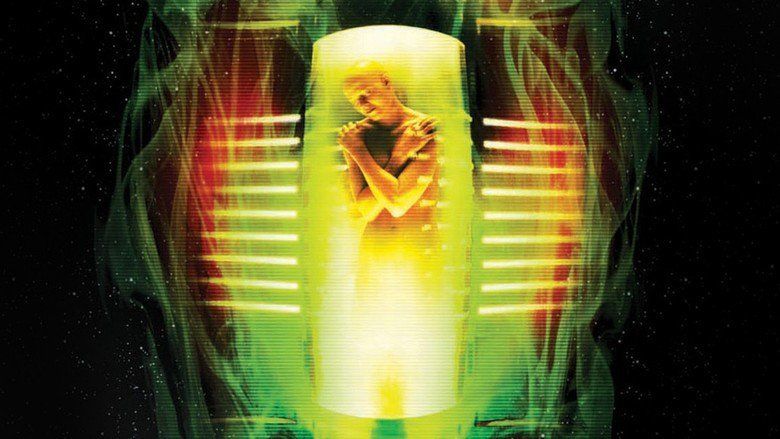
A sequel to Resurrection was planned as Joss Whedon had written an earth-set script for Alien 5, but was cancelled after Sigourney Weaver was not interested in this setting, though she has remained open to reprise her role as Ellen Ripley for a fifth installment on the condition that she likes the story. The fifth Alien film, Prometheus was released in 2012 directed by Ridley Scott, who stated that the film precedes the story of the 1979 film Alien, but is not directly connected to the original film's franchise, and that Prometheus explores its own mythology and ideas.

Alien resurrection nostalgia critic
Plot

In 2379, two hundred years after the events of Alien 3, military scientists on the space vessel USM Auriga create a clone of Ellen Ripley, designated Ripley 8, using DNA from blood samples taken before her death. The xenomorph queen's DNA has been mixed in with Ripley's, and the clone grows up with an embryo inside it. The scientists extract the embryo, raise it and collect its eggs while keeping Ripley 8 alive for further study. As a result of the xenomorphs' DNA inside her, she has enhanced strength and reflexes, blood that is somewhat acidic and a psychic link with the xenomorphs. Additionally, the xenomorph's genetic memory allows the clone to have some of Ripley's memories.
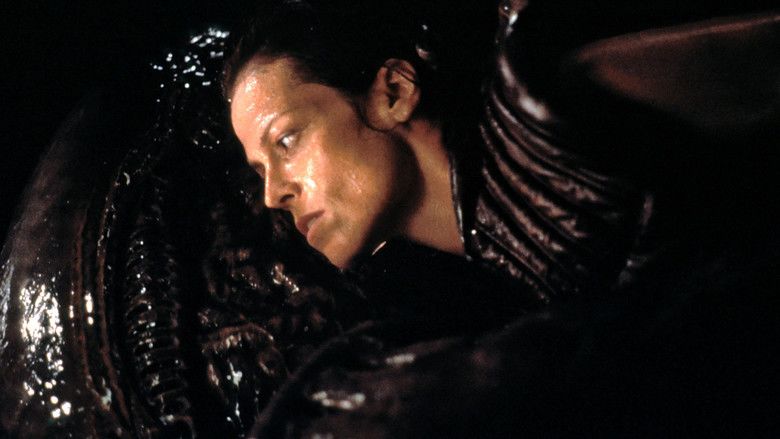
A group of mercenaries, Frank Elgyn, Johner, Christie, John Vriess (who constantly whistles "I'm Popeye the Sailor Man"), Sabra Hillard and Annalee Call, arrive at Auriga on their ship Betty. They deliver several kidnapped humans in stasis. The military scientists use the humans as hosts for the Aliens, raising several adult Aliens for study.
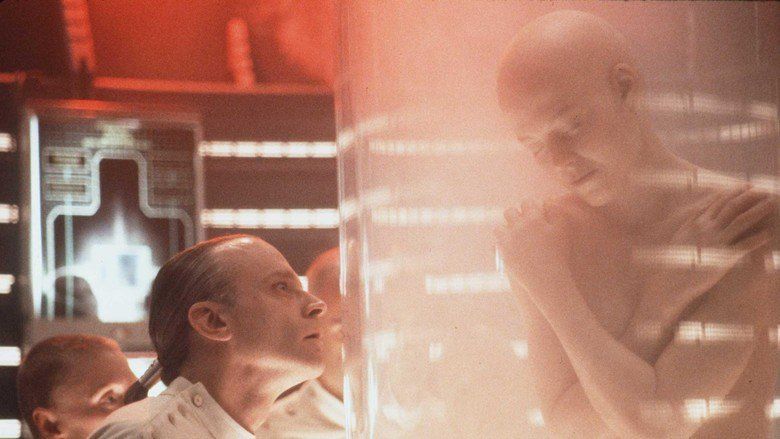
The Betty crew soon encounters Ripley 8. Call recognizes her name and tries to kill her, suspecting she may be used to create xenomorphs, but is unaware the creatures have already been cloned. The xenomorphs, having matured, escape confinement by killing off one of their own to use their acidic blood to burn through their enclosures, aware of their blood's acidity from said genetic memory. They then capture Dr. Jonathan Gediman and kill a second scientist. They damage the Auriga and kill some of those people who do not evacuate, including General Perez and Elgyn. Another crew member is cocooned for eggmorphing. Military scientist Dr. Wren reveals that the ship's default command in an emergency is to return to Earth. Realizing this will unleash the xenomorphs on Earth, Ripley 8, the mercenaries, Wren, a Marine named DiStephano and a surviving xenomorph host, Purvis, decide to head for the Betty and use it to destroy the Auriga. Along the way, Ripley 8 discovers a laboratory which contains the grotesque results of the previous seven failed attempts to clone Ellen Ripley. The surviving one begs Ripley 8 to euthanise her; she complies and then incinerates the lab and its contents.
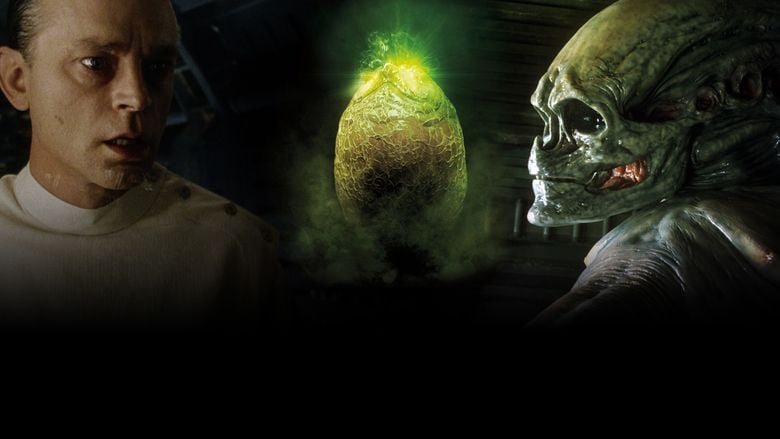
As the group makes their way through the damaged ship, they swim through a flooded kitchen. They are chased by two xenomorphs. One is killed, while the other snatches Hillard. As they escape the kitchen, the xenomorph returns and blinds Christie, who sacrifices himself to kill the xenomorph so the others can escape. After Wren betrays the group, Call is revealed to be an auton, an improved version of a human created by synthetics. Using her ability to interface with the Auriga's systems, Call sets it on a collision course with Earth, hoping to destroy the xenomorphs in the crash. She cuts off Wren's escape route and directs the xenomorphs towards him. Ripley 8 is captured by a xenomorph, while the others head for the Betty. Wren, who is already aboard, shoots Purvis, takes Call hostage and demands that she abort the collision. An injured Purvis attacks Wren and forces Wren's head to his chest just as the xenomorph embryo he is carrying bursts through his ribcage, causing it to go through Wren's head too, killing them both. The survivors shoot and kill the juvenile xenomorph.
Ripley is taken to the Alien nest, where she finds Gediman, still alive and partially cocooned. The xenomorph queen, having developed a uterus as a result of her genetic contamination with Ripley 8, gives birth to a xenomorph with overtly human traits. The hybrid xenomorph recognizes Ripley 8 as its mother, killing the queen and Gediman. Ripley 8 takes advantage of the distraction to escape, and makes her way to the Betty.
The "newborn" reaches the Betty and attacks Call, killing DiStephano when he tries to help her. Ripley 8 finds her way onto the ship and saves Call by distracting the hybrid. Using her acidic blood, Ripley 8 melts a hole in a window and pushes the hybrid towards it. The decompression violently sucks the creature through the hole and out into space as Ripley 8 tearfully watches on.
The countdown on the Auriga continues as the survivors escape in the Betty. The Auriga collides with Earth, causing a large explosion. As they look down at Earth, Call asks what Ripley 8 wants to do next. "I'm a stranger here myself," she replies. In an alternate ending that appears in some versions, the Betty lands in a ruined Paris.
Origins
Impressed with his work as a screenwriter, 20th Century Fox hired Joss Whedon to write the film's script. Whedon's initial screenplay had a third act on Earth, with a final battle for Earth itself. Whedon wrote five versions of the final act, none of which ended up in the film.
The studio initially imagined that the film would center around a clone of the character Newt from Aliens, as the Ellen Ripley character had died at the end of Alien 3. Whedon composed a thirty-page treatment surrounding this idea before being informed that the studio, though impressed with his script, now intended to base the story on a clone of Ripley, whom they saw as the anchor of the series. Whedon had to rewrite the script in a way that would bring back the Ripley character, a task he found difficult. The idea of cloning was suggested by producers David Giler and Walter Hill, who opposed the production of Alien Resurrection, as they thought it would ruin the franchise.
Sigourney Weaver, who had played Ripley throughout the series, wanted to liberate the character in Alien 3 as she did not want Ripley to become "a figure of fun" who would continuously "wake up with monsters running around". The possibility of an Alien vs. Predator film was another reason for the character's death, as she thought the concept "sounded awful". However, Weaver was impressed with Whedon's script. She thought that the error during Ripley's cloning process would allow her to further explore the character, since Ripley becoming part human and part Alien would create uncertainty about where her loyalties lay. This was an interesting concept to Weaver, who thought the film brought back the spirit of Alien and Aliens. Weaver received a co-producer credit and was reportedly paid $11 million.
Direction and design
Trainspotting director Danny Boyle was the producers' first choice to direct the film. Boyle and his producer met with effects supervisors to discuss the film, but he was not interested in pursuing the project and went on to make A Life Less Ordinary instead. Peter Jackson was also approached, but declined as he could not get excited about an Alien film. In 1995, after the release of The Usual Suspects, 20th Century Fox approached Bryan Singer to direct. Jean-Pierre Jeunet was asked to direct, as the film's producers believed he had a unique visual style. Jeunet had just completed the script to Amélie and was surprised he was offered the job for Alien Resurrection, as he thought the franchise had finished with Alien 3 and believed that making a sequel was a bad idea. Jeunet, however, accepted the project with a budget of $70 million. He required an interpreter as he did not speak much English when filming began.
Jeunet hired French special effects supervisor Pitof and cinematographer Darius Khondji, both of whom he had worked with on The City of Lost Children. Jeunet and his crew watched the latest science fiction and Alien films as reference material, and obtained production reports from the Alien films to study the camera setups. Jeunet was given creative control, contributing several elements to the script including five different endings, although the expensive ones were dismissed. He also opted to make the film a dark comedy and was encouraged to include more violence. In June 1996, Jeunet's frequent co-director, conceptual artist Marc Caro had drawn rough sketches of characters' costumes, which were shown to veteran costume designer Bob Ringwood. Ringwood made several modifications for the final design.
Creatures
Special effects company Amalgamated Dynamics Incorporated (ADI) was hired for the film, having previously worked on Alien 3. ADI founders Tom Woodruff, Jr. and Alec Gillis also had experience working with Stan Winston on Aliens. ADI based their designs and modifications of the Alien creatures on the film's script, which included the creatures having pointed tails for swimming, making their head domes and chins more pointed, and establishing them to appear more vicious using techniques of camera angles and shot duration. After receiving the director's approval, ADI began to create small sculptures, sketches, paintings, and life-size models.
Jeunet asked ADI to lean towards making the human/Alien hybrid creature more human than Alien. An early concept was to replicate Sigourney Weaver's features, although the crew felt this design would be too similar to the design of the creature Sil from the 1995 film Species. Eyes and a nose were added to the hybrid to allow it to have more expressions and communicate more emotion than the xenomorphs, so that it would have more depth as a character rather than being "just a killing machine". Jeunet was adamant about the hybrid having genitalia which resembled a mix of male and female sexes. 20th Century Fox was uncomfortable with this, however, and Jeunet eventually changed his mind, feeling that "even for a Frenchman, it's too much". The genitalia were removed during post-production using digital effects techniques. The animatronic hybrid required nine puppeteers and was the most complex animatronic in the film.
Filming
Alien Resurrection was filmed at Fox studios in Los Angeles, California, from October 1996 to February 1997. Jeunet had difficulty securing studio space, as the filming of Hollywood blockbusters such as Titanic, Starship Troopers, and The Lost World: Jurassic Park were taking place at the same time. Alien Resurrection was the first installment in the Alien series to be filmed outside England, a decision made by Weaver, who believed that the previous films' travel schedules exhausted the crew.
The underwater scene was the first to be shot, and for its filming Stage 16 at Fox Studios was reconstructed into a 36 by 45 meter tank, 4.5 meters deep, containing 548,000 gallons of water. The decision was made to convert the stage rather than film the scene elsewhere, since moving the film crew to the nearest adequate facility in San Diego would have been too costly for a single scene, and by converting Stage 16 20th Century Fox would be able to use the tank for future films. Because of the aquatic filming, the ability to swim was a prerequisite for cast and crew when signing onto the film. The cast trained in swimming pools in Los Angeles with professional divers to learn how to use the equipment. An additional two and a half weeks of training took place at the studio with stunt coordinator Ernie Orsatti and underwater cinematographer Peter Romano. Weaver, however, was unable to participate in most of the training due to commitments on Broadway. Winona Ryder faced a challenge with the scene, as she had nearly drowned at age 12 and had not been in the water since. She suggested using a body double, but knew that it would be too obvious to audiences due to the difference in hair length. She filmed the scene, but suffered from anxiety on the first day of filming.
Director Jeunet wanted to display Ripley's new powers, including a scene in which Ripley throws a basketball through a hoop while facing the opposite direction. Weaver trained for ten days and averaged one out of six baskets, although the distance required for filming was farther than she had practiced. Jeunet was concerned about the time being spent on the shot and wanted to either use a machine to throw the ball or to insert it later using computer-generated imagery (CGI). Weaver, however, was determined to make the shot authentic, and insisted on doing it herself. The shot required many dozens of takes, during which none of the balls went in. The crew were going to give up, but gave Weaver one last shot, and in this take, she got the ball in perfectly; the idea that she did it in one take is a myth. The ball was out of frame for a moment during the shot, and Pitof offered to edit it so that the ball was on-screen for the entire scene, but Weaver refused. Ron Perlman broke character when she made the basket, and turned to the camera to say "Oh my god!" There was enough of a pause between Weaver's basket and Perlman's statement for the film's editors to cut the scene accordingly during post-production.
Visual effects and miniatures
The film's script was laid out similar to a comic book, with pictures on the left and dialog and descriptions on the right. Jeunet planned every shot, which made it easier for visual effects artists to do their work. Blue Sky Studios was hired to create the first CGI Aliens to appear on film. Impressed with the company's work on Joe's Apartment creating CGI cockroaches, Jeunet and Pitof opted to hire the company to create 30 to 40 shots of CGI Aliens. The decision was made to use CGI Aliens rather than puppets or suited actors whenever the creatures' legs were in frame, as Jeunet felt that a man in a suit is easy to distinguish when the full body is seen.
All of the spaceships in the film were miniatures, as visual effects supervisors believed CGI was not effective enough to create realistic spaceships. The USM Auriga was originally designed by artist Nigel Phelps and resembled a medical instrument. This design proved to be too vertical for the film's opening shot, in which the camera pans out to show the ship, and did not appear satisfactory in the film's 2.35:1 aspect ratio. Three days before the design had to be finalized, Jeunet rejected it. Phelps, production illustrator Jim Martin, and concept artist Sylvain Despretz were tasked to redesign the ship. Jeunet felt Martin's design was too much like a space station, while he accepted Despretz's design due to its streamlined and horizontal appearance.
Music
Composer John Frizzell was encouraged by a friend to audition to compose Alien Resurrection's film score. Frizzell sent in four cassettes and received a call from 20th Century Fox about the fourth, which contained music from The Empty Mirror. Impressed with his work, Fox representative Robert Kraft had a short meeting with Frizzell and hired him. Frizzell spent seven months writing and recording the score, which Jeunet requested to be very different and unique from the previous films in the series. This included themes of romance and eroticism, incorporating sound effects such as a gong and rub rod. The cue "They Swim" took one month to complete as Jeunet was not pleased with Frizzell's original version, although the final result was a mix between the first and third versions he had composed. "I'm Popeye the Sailor Man", Popeye's theme song written by Sammy Lerner, is whistled by Dom Vriess and is credited in the credits.
Box office
A pre-screening of Alien Resurrection was held in Camarillo, California, and the film was released in North America on November 26, 1997. Debuting at number two at the box office behind Flubber, Alien Resurrection grossed $25 million in its first five days–$16 million over the weekend, for an average of $6,821 per 2,415 theaters. The film grossed $47.7 million in North America, the least successful of the Alien series on that continent. It was well received internationally, however, with a gross of $113.5 million, bringing its total gross to $161.2 million. It was the 43rd highest-grossing film in North America in 1997.
Critical reception
Alien Resurrection received mixed reviews from film critics, generally regarded as a slight improvement over Alien 3. The film scored 54% on Rotten Tomatoes and 63/100 on Metacritic based on 21 reviews. Roger Ebert of the Chicago Sun-Times gave the film a negative review, stating "There is not a single shot in the movie to fill one with wonder," later naming it one of the worst films of 1997. Jeffery Overstreet of Looking Closer commented "It's time they quit killing the aliens, and just killed the Alien series altogether. ... How the mighty have fallen." Joe Baltake of the Sacramento Bee stated that "This 'Alien' should never have been resurrected", while Tom Meek of Film Threat wrote "Weaver and Jeunet's efforts are shortchanged by the ineptness of Joss Whedon's script, that seems to find a way to make action sequences unexciting."
On the other hand, Mary Brennan of Film thought that the movie was "A lot of fun to watch, and easy to surrender to in the moment." Houston Chronicle editor Louis B. Parks said "The film is a marvel, a well-photographed feast of visual imagery", while Richard Schickel of Time wrote that it was "Less frightening, but as much fun as ever." Washington Post contributor Desson Thomson felt it "satisfactorily recycles the great surprises that made the first movie so powerful. And most significantly, it makes a big hoot of the whole business."
Screenwriter Joss Whedon was unhappy with the final product. When asked in 2005 how the film differed from the script he had written, Whedon responded:
"It wasn't a question of doing everything differently, although they changed the ending; it was mostly a matter of doing everything wrong. They said the lines...mostly...but they said them all wrong. And they cast it wrong. And they designed it wrong. And they scored it wrong. They did everything wrong that they could possibly do. There's actually a fascinating lesson in filmmaking, because everything that they did reflects back to the script or looks like something from the script, and people assume that, if I hated it, then they’d changed the script...but it wasn’t so much that they’d changed the script; it’s that they just executed it in such a ghastly fashion as to render it almost unwatchable."
Conversely, H. R. Giger, designer of the original Alien, was pleased with Resurrection, describing it as an "excellent film", but was disappointed about not being credited.
Home media
Alien Resurrection was first released onto home video in the VHS and DVD formats on May 5, 1998. The film received its first Blu-ray release as part of the Alien Anthology box set released in 2010 including all four films and their alternate versions. The film was re-released on Blu-ray on May 10, 2011, in a stand-alone feature.
2003 Special Edition
In 2003, Jeunet included an alternate version of the film on the Alien Quadrilogy DVD box set with different opening and closing credits, which were originally cut due to budget restrictions. The deleted scenes included references to the character Newt from Aliens, Vriess making a joke to Call, Ripley's clone waking up in the middle of her operation, an extended conversation in the mess hall that reveals the details of Ripley's former employers, Weyland-Yutani, an extended dialogue between Call and Ripley's clone in the chapel and scenes of the Betty landing on Earth and the planet's landscape during the final dialogue between Ripley and Call, as they view the ruins of Paris. The special edition restores 13 minutes and 5 seconds worth of footage (including the new opening and ending), and is 7 minutes longer than theatrical version. Jeunet has stated that the special edition is not a director's cut as his preferred version is the theatrical cut.
Alien Resurrection – Collector's Edition was released on January 6, 2004, containing the two discs contained in the Quadrilogy set. The second disc, called One Step Beyond: The Making of Alien Resurrection, features over two hours of footage relating to pre-production, production, post-production, screen tests, concept art, and audio commentary by the cast and crew.
Merchandising
To coincide with the release of the film, a book titled Making of Alien Resurrection was released on November 28, 1997, in addition to a novelization of the film released on December 1, 1997. Dark Horse Comics also published a two-issue comic book adaptation. A video game for the PlayStation was released in 2000.
Cancelled sequel
Joss Whedon had written an Earth-set script for Alien 5, but Sigourney Weaver was not interested in this setting, and sought to return the story to the planetoid from the first film. Weaver has remained open to a role in a fifth installment on the condition that she likes the story. Before 20th Century Fox greenlit Alien vs. Predator, James Cameron had been collaborating on the plot for a fifth Alien film with another writer. Learning of Fox's plans for a crossover, he ceased work on his concept. Before he saw the film, Cameron had stated that it would "kill the validity of the franchise", and that "it was Frankenstein Meets Werewolf" – like "Universal just taking their assets and starting to play them off against each other". Although he later admitted to liking Alien vs. Predator, Cameron ruled out any future involvement with the series.
In a 2002 interview, Ridley Scott stated that a new Alien project "would be a lot of fun", but that "the most important thing was to get the story right". Scott's concept for the plot was "to go back to where the alien creatures were first found and explain how they were created". In late 2008, Weaver hinted in an interview with MTV that she and Scott were working on an Alien spinoff film, which would focus on the chronicles of Ellen Ripley rather than on the Aliens, but the continuation of Ripley's story has not materialized. Instead, Prometheus, was released in June 8, 2012. A sequel to Prometheus, titled Alien: Covenant, was released in May 19, 2017. Scott developed a story that precedes the story of his 1979 film Alien but is not directly connected to that franchise. According to Scott, although the film shares "strands of Alien's DNA, so to speak", and takes place in the same universe, Prometheus explores its own mythology and ideas.
At the 2014 Hero Complex Film Festival, Sigourney Weaver hinted that she'd be interested in returning to the role of Ripley, saying: "Had we done a fifth one, I don't doubt that her humanity would have prevailed. … I do feel like there is more story to tell. I feel a longing from fans for the story to be finished. I could imagine a situation where we finish telling the story." She was quoted: "I don't think Alien belongs on Earth popping out of a haystack, which is where I was afraid it was going to go. I feel it should take place in the far reaches of the universe where no one in their right mind would go. There are very few filmmakers that I can think of that I would want to entrust this to."
In February 2015, Neill Blomkamp posted artwork of an Alien film on his Instagram, announcing that he had been signed on to direct a new Alien film that would serve as a direct sequel to Cameron's 1986 film Aliens, which retcons the events that transpired in the third and fourth films as Blomkamp's artwork featured Sigourney Weaver's Ellen Ripley and Michael Biehn's Dwayne Hicks. On January 21, 2017, in response to a fan question on Twitter asking what the chances were of his Alien project actually happening, Blomkamp responded "slim". On May 1, 2017, Scott stated that the film was "dead", saying that 20th Century Fox didn't want to go further along with the project.
Michael Reyes writing for Cinemablend in July 2017 quoted Ridley Scott stating that if Sigourney Weaver could reprise her role as Ellen Ripley in the sequels, then "We're heading toward the back end of the first Alien, so using CGI may be feasible. I don't think it'll...but Ripley's going to be somebody's daughter. Obviously. We're coming in from the back end. The time constraints, of what's the time between this film, where we leave David going off heading for that colony. I think you're probably two films out from even considering her."
20th Century Fox is rumored to be reassessing the state of the franchise after the moderate reception to Covenant, although they have not released an official statement to that affect. According to reports there will be only one additional prequel film (Alien: Awakening) before a soft-reboot is made to the Alien universe consisting of a new series of Alien films with brand new, original characters as well as a new setting. Fans of the franchise have started a petition to help save Blomkamp's cancelled film.
In the audio commentary for Alien: Covenant, Scott confirmed that a sequel to Alien: Covenant, tentatively referred to as Alien: Covenant 2, is being written by John Logan, with Michael Fassbender, Katherine Waterston and Danny McBride reprising their roles. Scott also confirmed that the film will cap his Prequel Series, leading directly into the events of Alien 1.
References
Alien Resurrection WikipediaAlien Resurrection IMDbAlien Resurrection Rotten TomatoesAlien Resurrection Roger EbertAlien Resurrection MetacriticAlien: Resurrection themoviedb.org
